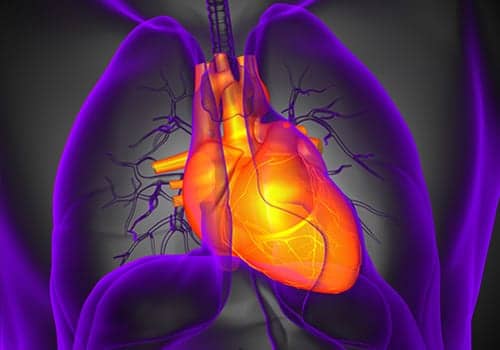A new survey sponsored by Bayer revealed that many physicians report a lack of familiarity with chronic thromboembolic pulmonary hypertension (CTEPH). The survey was released today to bring attention to the condition and the need for further education to improve the patient pathway to diagnosis and effective treatment, according to a Bayer news release.
CTEPH is a rare, life-threatening form of pulmonary hypertension (PH) that causes high blood pressure in the lungs and can lead to right heart failure and death. Each year, in the US, about 600,000 persons have an acute pulmonary embolism, and it is estimated that there are between 500 and 2,500 new cases of CTEPH diagnosed each year. The incidence and prevalence of CTEPH are yet to be accurately determined and may be significantly underestimated. In fact, as many as 1 out of every 25 people who had a pulmonary embolism (even if they were treated with at least 3 months of anticoagulants), go on to develop CTEPH.
The survey of 604 PCPs, cardiologists and pulmonologists (approximately 200 from each group) was conducted online by Schlesinger Associates from August 10, 2015 to August 18, 2015.
Findings included:
- Additional education on the preferred diagnostic test to identify CTEPH is needed.
- Symptoms of CTEPH can include shortness of breath, fatigue, light-headedness, fainting and chest discomfort. Because these symptoms are nonspecific, CTEPH is underdiagnosed and often misdiagnosed. A ventilation/perfusion (VQ) scan is the preferred test for screening for chronic thromboembolic disease, and it should be viewed as an initial step in the diagnosis of CTEPH, but 38% of cardiologists and pulmonologists surveyed did not know that it is the preferred screening test for CTEPH.
- There is substantial under-recognition of surgery as a potential cure for CTEPH.
- The standard and potentially curative treatment for CTEPH is pulmonary thromboendarterectomy (PTE), in which blood vessels of the lungs are cleared of clot and scar material. More medical centers have begun performing PTE surgeries, and outcomes are improving, but the number of physicians who recognize PTE as an option to cure CTEPH remains low – 20% of PCPs, 43% of cardiologists and 64% of pulmonologists. Although surgery is the most effective therapy for CTEPH, 50% of PCPs would categorize it as a last resort, rather than a cure (14%) or treatment (33%).
- There is a lack of awareness of the connection between pulmonary embolism and CTEPH.
- Pulmonary embolism (PE) is a sudden blockage in a lung artery, which is usually caused by a blood clot that travels from a vein in the leg to the lung. CTEPH is one of five types of PH designated by the World Health Organization as Group 4. Diagnosis of CTEPH requires an appropriate diagnostic workup. The diagnosis of CTEPH is critical, as it is a potentially curable form of PH. As many as 1 out of every 25 previously treated patients with PE could develop CTEPH. According to the survey results, 82% of specialists feel general practitioners should refer patients with a PE to them immediately, but only 45% of PCPs surveyed said they would.
- Specialists wish PCPs would refer patients with lung disease symptoms, including those of CTEPH, to them sooner.
- More than half (55%) of cardiologists and pulmonologists surveyed wish that general practitioners would better understand the specific signs and symptoms of CTEPH and pulmonary arterial hypertension (PAH), so that they can see patients sooner.
“Because surgery can be an effective treatment for CTEPH, it is critical that physicians suspect and diagnose the condition. Unfortunately, as demonstrated by this survey, recognition of CTEPH among primary care physicians is inadequate,” said Richard Channick, MD, director of Massachusetts General Hospital’s Pulmonary Hypertension and Thromboendarterectomy Program. “We very much need further education to identify and treat these patients as quickly as possible.”
Dario Mirski, MD, vice president and head, US medical affairs at Bayer, added: “Together with treating physicians, our goal is always to find ways to raise awareness about this misunderstood disease,” “For patients with CTEPH, the benefits of surgery may be very positive, and we hope the results of this survey help drive conversations about optimal diagnostic tools and treatment among physicians and the patient community.”










